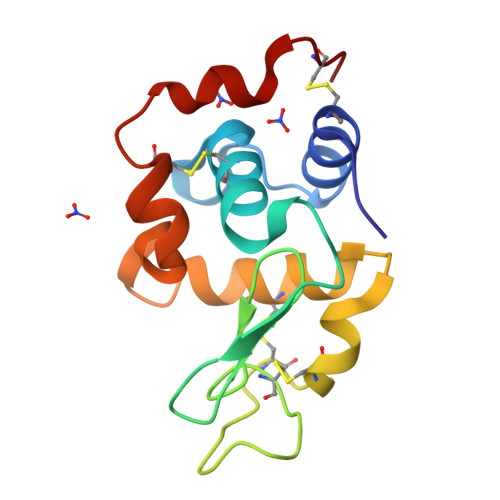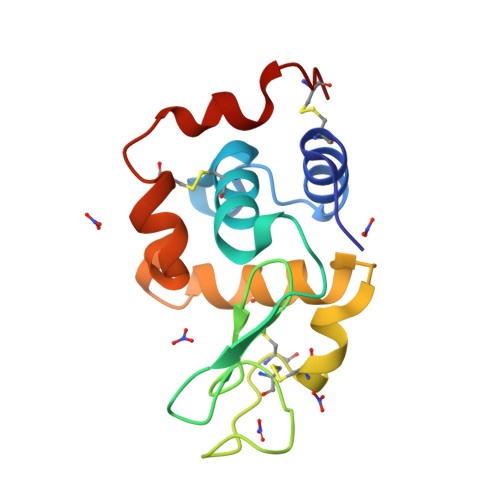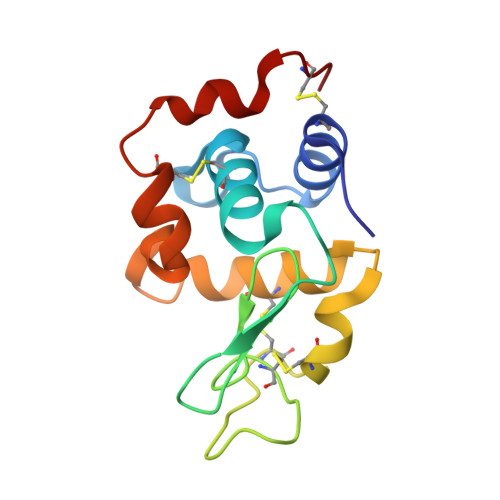Effect of stabilizing additives on the structure and hydration of proteins: a study involving monoclinic lysozyme.
Saraswathi, N.T., Sankaranarayanan, R., Vijayan, M.(2002) Acta Crystallogr D Biol Crystallogr 58: 1162-1167
- PubMed: 12077436
- DOI: https://doi.org/10.1107/s0907444902007126
- Primary Citation of Related Structures:
1LJ3, 1LJ4, 1LJE, 1LJF, 1LJG, 1LJH, 1LJI, 1LJJ, 1LJK - PubMed Abstract:
In pursuance of a long-range programme on the hydration, mobility and action of proteins, the structural basis of the stabilizing effect of sugars and polyols is being investigated. With two crystallographically independent molecules with slightly different packing environments in the crystal, monoclinic lysozyme constitutes an ideal system for exploring the problem. The differences in the structure and hydration of the two molecules provide a framework for examining the changes caused by stabilizing additives. Monoclinic crystals were grown under native conditions and also in the presence of 10% sucrose, 15% trehalose, 10% trehalose, 10% sorbitol and 5% glycerol. The crystal structures were refined at resolutions ranging from 1.8 to 2.1 A. The average B values, and hence the mobility of the structure, are lower in the presence of additives than in the native crystals. However, a comparison of the structures indicates that the effect of the additives on the structure and the hydration shell around the protein molecule is considerably less than that caused by differences in packing. It is also less than that caused by the replacement of NaNO(3) by NaCl as the precipitant in the crystallization experiments. This result is not in conformity with the commonly held belief that additives exert their stabilizing effect through the reorganization of the hydration shell, at least as far as the ordered water molecules are concerned.
Organizational Affiliation:
Molecular Biophysics Unit, Indian Institute of Science, Bangalore 560 012, India.


















